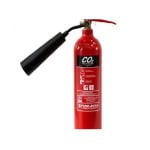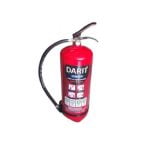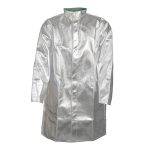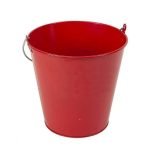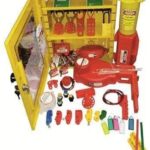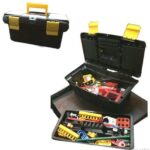Your list is empty, add products to the list to send a request
What are 3 Fire Precautions?

25
May
Fire safety is a critical concern for homes, businesses, and public spaces. Ensuring that proper Fire precautions are in place can save lives, protect property, and prevent devastating losses. In this blog, we will explore three essential fire precautions: installing fire alarms, creating and practicing an evacuation plan, and maintaining fire extinguishers. Additionally, we will discuss how these precautions can be effectively implemented using products and services from FireSupplies.
1. Installing Fire Alarms
Fire alarms are the first line of defense in fire safety. They provide early warning of a fire, allowing occupants to evacuate safely and promptly.
Types of Fire Alarms
1. Smoke Alarms: These detect smoke particles in the air. There are two main types:
– Ionization Smoke Alarms: Better at detecting flaming fires.
– Photoelectric Smoke Alarms: More responsive to smoldering fires.
2. Heat Alarms: These activate when the temperature rises above a certain level. They are suitable for kitchens and garages where smoke alarms may cause false alarms.
3. Combination Alarms: These devices combine smoke and heat detection, offering broader protection.
Installation Tips
– Placement: Install smoke alarms inside each bedroom, outside sleeping areas, and on every level of the home, including the basement. Heat alarms should be installed in kitchens and garages.
– Height: Mount alarms high on walls or ceilings. Smoke rises, so the highest points are ideal for early detection.
– Maintenance: Test alarms monthly and replace batteries annually. Replace the entire unit every 10 years.
FireSupplies Solutions
At FireSupplies, we offer a wide range of fire alarms, including smoke, heat, and combination alarms. Our products are designed to meet the highest safety standards, ensuring reliable performance when you need it most. Explore our collection to find the best solutions for your fire safety needs.
2. Creating and Practicing an Evacuation Plan
An effective evacuation plan is crucial for ensuring everyone’s safety during a fire. It helps occupants exit the building quickly and safely.
Steps to Create an Evacuation Plan
1. Identify Exits: Ensure all possible exits are accessible and unobstructed. Each room should have at least two ways to escape.
2. Create a Floor Plan: Draw a map of your home or building, marking all exits, and include a path to each exit.
3. Designate a Meeting Place: Choose a safe location outside the building where everyone will meet after evacuating.
4. Plan for Special Needs: Consider the needs of children, elderly individuals, and those with disabilities. Assign someone to assist them if necessary.
5. Communicate the Plan: Ensure everyone in the building understands the evacuation plan and knows their role.
Practice Makes Perfect
– Regular Drills: Conduct fire drills at least twice a year. Practice during different times of the day to prepare for various scenarios.
– Role Play: Assign roles during drills, such as someone calling emergency services and someone assisting those with special needs.
– Review and Improve: After each drill, review what worked well and what didn’t. Make necessary adjustments to improve the plan.
FireSupplies Resources
FireSupplies offers a range of resources to help you develop and practice your evacuation plan. From educational materials to emergency planning kits, we provide the tools you need to ensure everyone knows what to do in case of a fire. Visit our website to access these valuable resources and enhance your fire safety preparedness.
3. Maintaining Fire Extinguishers
Fire extinguishers are vital tools for controlling small fires before they spread. Proper maintenance ensures they are ready to use when needed.
Types of Fire Extinguishers
1. Class A: For ordinary combustibles like wood, paper, and cloth.
2. Class B: For flammable liquids such as gasoline, oil, and grease.
3. Class C: For electrical fires involving wiring, outlets, and appliances.
4. Class D: For flammable metals, typically used in industrial settings.
5. Class K: For kitchen fires involving cooking oils and fats.
Maintenance Tips
– Monthly Checks: Inspect fire extinguishers monthly to ensure they are in their designated place, not damaged, and fully charged. Make sure the pressure gauge needle is in the green zone.
– Annual Servicing: Have fire extinguishers serviced by a professional once a year. This includes checking the pressure, seals, and overall condition.
– Replace and Refill: Replace any fire extinguishers that are damaged, have been used, or are past their expiration date. Refill as necessary.
Using a Fire Extinguisher
Remember the PASS method:
– Pull the pin.
– Aim the nozzle at the base of the fire.
– Squeeze the handle.
– Sweep from side to side.
FireSupplies Offerings
FireSupplies stocks a comprehensive range of fire extinguishers suitable for different types of fires. We also offer maintenance services to keep your fire extinguishers in top condition. Explore our products and services to ensure you are well-equipped to handle fire emergencies.
Conclusion
Fire safety is a critical aspect of protecting lives and property. By installing fire alarms, creating and practicing an evacuation plan, and maintaining fire extinguishers, you can significantly reduce the risk of fire-related injuries and damage. At FireSupplies, we are committed to providing the best fire safety products and services to help you stay safe and prepared. Visit our website to learn more about our offerings and how we can assist you in enhancing your fire safety measures.
For further information and to explore our products, visit FireSupplies. Stay safe and be prepared!










